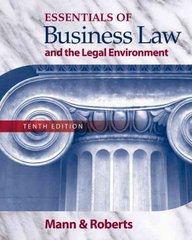Question
46.The total demand for goods and services at a given price level is also known as A. autonomous consumption. B. planned expenditures. C. the consumption
46.The total demand for goods and services at a given price level is also known as
A.
autonomous consumption.
B.
planned expenditures.
C.
the consumption function.
D.
equilibrium output.
47.If an economy is producing a level of output which is higher than the equilibriumlevel, planned expenditures________ total output and________ goods and services are being produced than are being demanded.
A.
are lessthan; fewer
B.
exceed; more
C.
are lessthan; more
D.
exceed; fewer
48.If an economy is producing a level of output which is lower than the equilibriumlevel, planned expenditures________ total output and________ goods and services are being produced than are being demanded.
A.
are lessthan; more
B.
exceed; more
C.
are lessthan; fewer
D.
exceed; fewer
49.The consumption function describes the relationship between
A.
investment and interest rates.
B.
prices and demand.
C.
consumer spending and income.
D.
consumers and firms.
50.The marginal propensity to consume (MPC) is the
A.
fraction of additional income that is spent.
B.
fraction of additional consumption that is not based on the level of income.
C.
ratio of consumption to savings.
D.
ratio of consumption to income.
51.Autonomous consumption is
A.
the part of consumption that depends on the level of income.
B.
the relationship between consumption spending and the level of income.
C.
the sum of consumption that depends on the level of income and consumption that does not depend on income.
D.
the part of consumption that does not depend on income.
52.The marginal propensity to consume (MPC) is equal to
A.
1+ MPS.
B.
MPS 1.
C.
1 MPS.
D.
MPS+ 1.
53.A decrease in consumer wealth will
A.
not change autonomous consumption and rotate the consumption function downward.
B.
increase autonomous consumption and shift the consumption function upward.
C.
decrease autonomous consumption and shift the consumption function downward.
D.
not change autonomous consumption and rotate the consumption function upward.
54.Which of the following shifts the entire consumption functionupwards?
A.
a decrease in the value of consumer durables
B.
an increase in consumer wealth
C.
a decrease in consumer confidence
D.
an increase in income
56.Recall the Application about the wealthyhand-to-mouth and their consumption spending to answer the following question.
According to theApplication, because of the wealthyhand-to-mouth individuals, the average mpc of the country is
A.
greater than 2.
B.
low.
C.
zero.
D.
high.
57.In the simple Keynesian cross model with no government or foreignsectors, at the equilibrium level of output
A.
saving is greater than investment.
B.
saving is equal to investment.
C.
saving is less than investment.
D.
saving is equal to zero.
58.f a policymaker wants to stimulate theeconomy, a________ would be preferable to a________.
A.
lowervalued multiplier; higher valued multiplier
B.
high MPS; low MPS
C.
low MPC; high MPC
D.
high MPC; low MPC
59.The tax multiplier is negative because
A.
increases in taxes decrease disposable personal income and lead to a reduction in consumption spending.
B.
increases in consumption spending have a negative impact on tax revenues.
C.
tax rates are inversely related to tax revenues.
D.
taxes always have a negative impact on the economy.
60.The multiplier for equal increases in government spending and taxes is called the
A.
tax multiplier.
B.
simple multiplier.
C.
balanced budget multiplier.
D.
government spending multiplier.
61.Recall the Application about Austrian economist Henry Hazlitt and the Broken Window Fallacy to answer the followingquestion(s). Hazlitt questioned whether a hoodlum breaking a store window was actually good for society.
According to theApplication, Hazlitt's argument that the broken window is NOT good for society
A.
works in both the Keynesian and classical worlds regardless of where the economy is operating relative to full employment.
B.
works in the classical world when the economy is operating at full employment.
C.
works in the Keynesian world when the economy is operating below full employment.
D.
never works in the Keynesian or classical worlds regardless of where the economy is operating relative to full employment.
62.The fraction of additional income spent on imports is called the
A.
import function.
B.
trade balance.
C.
marginal propensity to import.
D.
marginal propensity to export.
63.What happens to U.S. GDP when foreign countries experienceprosperity?
A.
It decreases because the foreign countries will now buy more of their own products.
B.
It does not change because U.S. GDP is not affected by othercountries' prosperity.
C.
It increases because the United States will export more product to those countries.
D.
It decreases because the foreign countries will be able to export more at a lower cost.
Step by Step Solution
There are 3 Steps involved in it
Step: 1

Get Instant Access to Expert-Tailored Solutions
See step-by-step solutions with expert insights and AI powered tools for academic success
Step: 2

Step: 3

Ace Your Homework with AI
Get the answers you need in no time with our AI-driven, step-by-step assistance
Get Started


